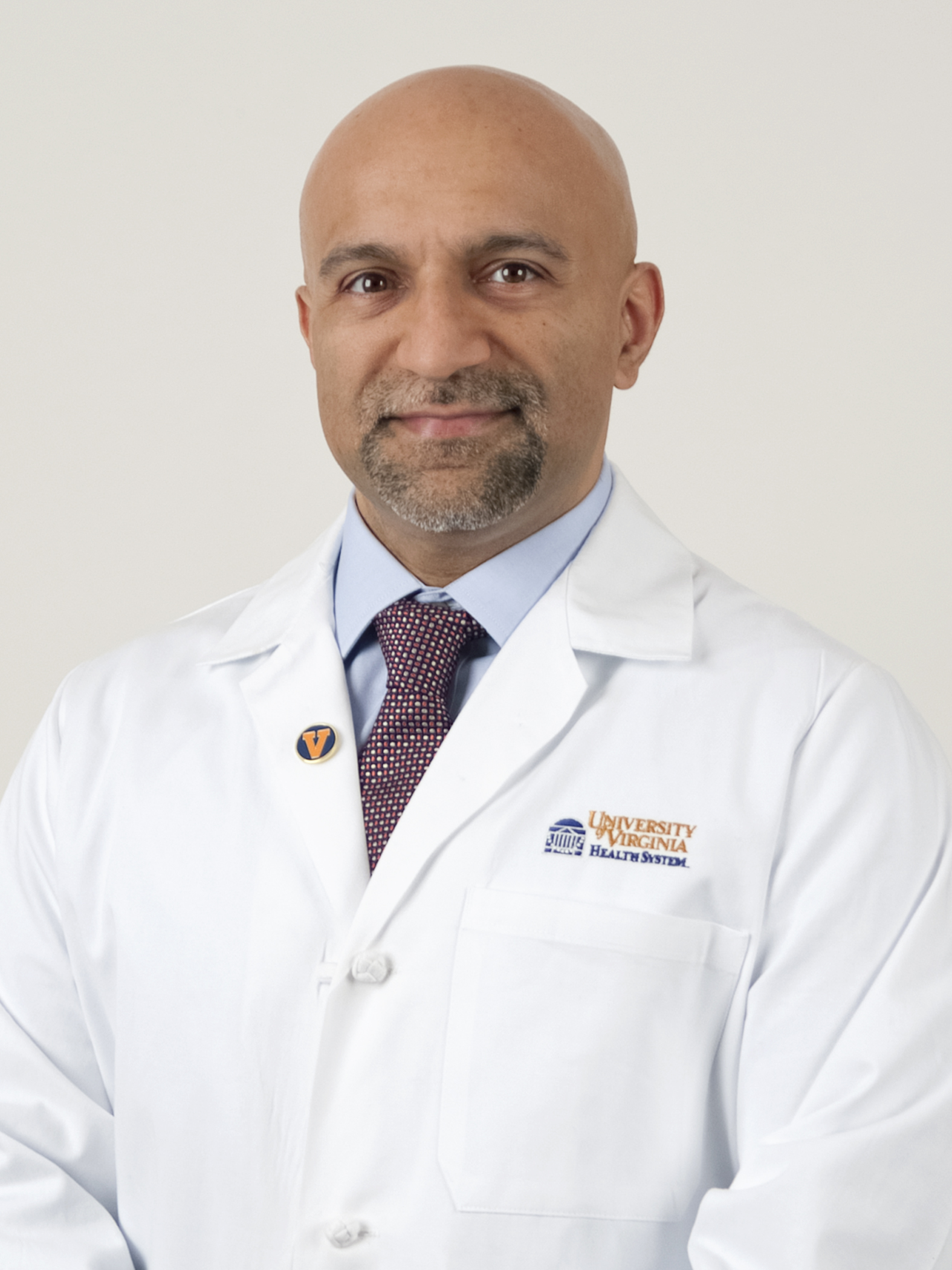
Because peripheral artery disease (PAD) is a marker of a patient’s propensity to develop complications from a more serious condition like coronary disease or cerebrovascular disease, interventional cardiologist Kanwar Singh, MD, has committed himself to not only mastering advanced coronary and vascular revascularization techniques, but also providing comprehensive care to vascular patients. “I don’t just care for atherosclerosis of the legs, coronaries or carotids,” he says. “This disease process manifests itself in different parts of the body, so I care for the patient holistically to keep them out of trouble, and can take care of them if and when they require emergent treatment.”
Singh is a recent addition to the University of Virginia Cardiology Department, recruited by Chief of Cardiology Brian Annex, MD, in August 2013. “I came to UVA because I knew what world-class academic, clinical and research facilities and faculty were in place,” he says. “My goal is to build the vascular component of the cardiology practice.”
With the number of diagnostic tests performed at UVA each day for vascular disease topping 50, the demand for this service is high. “Approximately 30 percent of adult patients seen by our referring physicians have PAD,” he says. “It is becoming more common with our aging population. Anyone over age 50 with one vascular risk factor or anyone over age 70 is at increased risk – that’s the majority of patients who walk through the doors in any medical center.”
Restoring Blood Flow
Among those diagnosed with PAD, Singh is seeing an increase in cases of a severe form called critical limb ischemia, which is characterized by rest pain, tissue ulceration and gangrene, often leading to amputation. At UVA, these patients have access to advanced, minimally invasive techniques that restore blood flow and prevent a debilitating outcome. “We can revascularize arteries as small as 1mm, from the aorta all the way down to the toes using advanced technology, and there is nothing better than preventing amputation,” says Singh.
In addition to standard angioplasty and stenting procedures, some of these techniques are offered as part of clinical studies and are not widely available elsewhere, such as the placement of drug-coated stents and balloons that continue to treat long after the procedure, as well as special catheters that shave the plaque from the artery and lasers that evaporate plaque. “Even with some of our advanced devices, these are typically one-day procedures so patients go home the same day and return to activities within one to two days,” says Singh.
Long-Term Disease Management
Singh is committed to providing ongoing care to his patients, before and after a procedure. Rather than automatically referring patients to another specialist for the management of high blood pressure, high cholesterol and other cardiovascular risk factors, Singh works with their primary care provider to help them face those challenges directly.
“I like the immediate gratification I get from doing a procedure in the cath lab,” says Singh. “That, with the ability to offer longitudinal care, slowly knocking down a patient’s risk factors, is unique — it’s that marriage of long-term care and acute care that I enjoy.
“Most patients with coronary disease have PAD, and vice versa, and patients need care for both. Instead of a patient bouncing around from a cardiologist to a vascular surgeon and interventional radiologist, they can see one provider, and have their whole disease state — and it’s risk factors — managed comprehensively.”